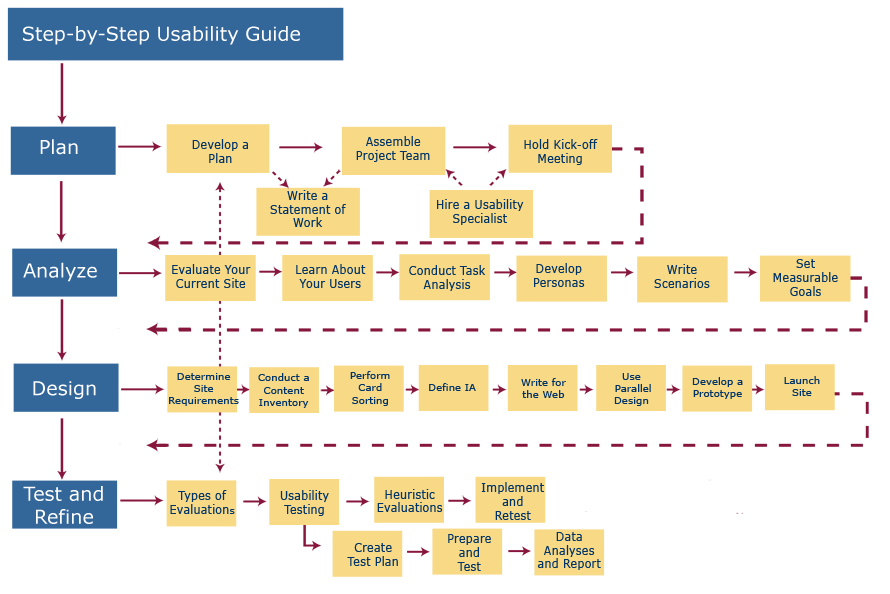Usability
In general, usability refers to how well users can learn and use a product to achieve their goals and how satisfied they are with that process.
A key methodology for carrying out usability is called User-Centered Design.
What Does Usability Measure
Usability measures the quality of a user’s experience when interacting with a product or system-whether a Web site, a software application, mobile technology, or any user-operated device.
It is important to realize that usability is not a single, one-dimensional property of a user interface. Usability is a combination of factors including:
- Ease of learning – How fast can a user who has never seen the user interface before learn it sufficiently well to accomplish basic tasks?
- Efficiency of use – Once an experienced user has learned to use the system, how fast can he or she accomplish tasks?
- Memorability – If a user has used the system before, can he or she remember enough to use it effectively the next time or does the user have to start over again learning everything?
- Error frequency and severity – How often do users make errors while using the system, how serious are these errors, and how do users recover from these errors?
- Subjective satisfaction – How much does the user like using the system?
Here’s a step-by-step visual map to guide you through the user-centered design process.

Discover more from Cloud Distilled ~ Nithin Mohan
Subscribe to get the latest posts sent to your email.
Nice post Nithin!
It pulled out awesome points in planning and designing a system.
[…] This post was mentioned on Twitter by YYZtech, Nithin Mohan T K. Nithin Mohan T K said: A Guide for Developing usable and useful websites http://goo.gl/fb/BVZ5 […]